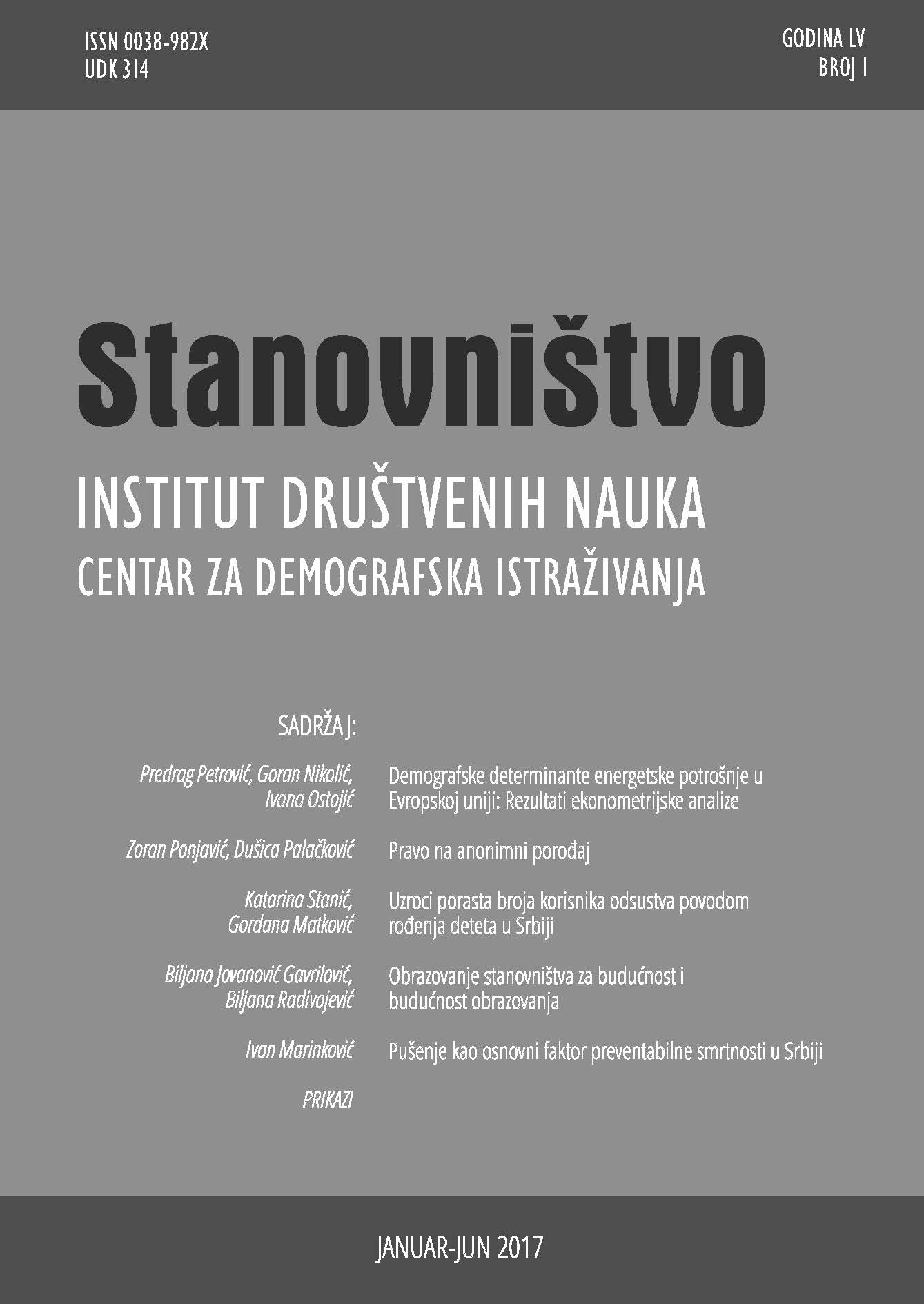Obrazovanje stanovništva za budućnost i budućnost obrazovanja
Education of Population for the Future and the Future of Education
Author(s): Biljana Jovanović Gavrilović, Biljana RadivojevićSubject(s): Higher Education , Social development, Policy, planning, forecast and speculation, Economic development
Published by: Институт друштвених наука
Keywords: education; human capital; sustainable development; Fourth Industrial Revolution; labor market
Summary/Abstract: The key to the future of any country in the modern world lies in the knowledge, skills and talent of its population. This gives a special importance to education through which human capital is created as an important component of national wealth. Different methods of measuring human capital are found in literature. There is a well-known division into monetary and non-monetary methods, with the latter being specifically addressed in the article.Education plays an important role in achieving sustainable development. Through education, knowledge about sustainable development is acquired while human resources that are capable and willing to achieve this development are created. Education, just like sustainable development, has a long-time perspective. In both cases, the interests of the future are respected when making decisions in the present. The impact of education on sustainable development is manifested through all three of its dimensions – economic, social and environmental.The key role of education for achieving sustainable development has been globally recognized and embedded in relevant United Nations documents, including a new global development agenda by 2030, focusing on the Sustainable Development Goals, of which Objective 4 explicitly refers to education. The European Union also pays considerable attention to education for the future in the context of the commitment of its members to achieve sustainable development. Serbia, at least declaratively, follows it, given the orientation of the country to join this regional integration.The future of education is under the strong influence of global mega trends, especially the Fourth Industrial Revolution, which strongly influences the world of work and the necessary knowledge and skills. During the earlier industrial revolutions, it took several decades to build appropriate education and training systems, but there is no time for that now. Changes must be anticipated, and reactions should be quick.The quality of educational systems of countries around the world and their preparedness for the challenges of the new age can be evaluated on the basis of the results of the Program for International Student Assessment – PISA, the most important research in the field of education, which, under the auspices of the OECD, tests the knowledge and skills of fifteen-year-olds, and relying on the composite indicator introduced by the World Economic Forum – Global Human Capital Index (GHCI). The results for Serbia are generally discouraging, but in some segments, they point to the country’s hidden potentials that should be activated.Education represents the development opportunity of Serbia at the threshold of the Fourth Industrial Revolution. As a small and economically underdeveloped country, Serbia should not remain at the margin of events, in the role of a passive observer. On the contrary, through adapting its education system to the demands of time by adequate financial and institutional support, thus improving human capital of the people, Serbia can find its place in a changing labor market and create preconditions for dynamic and sustainable economic development.
Journal: Stanovništvo
- Issue Year: 55/2017
- Issue No: 1
- Page Range: 63-85
- Page Count: 24
- Language: Serbian

